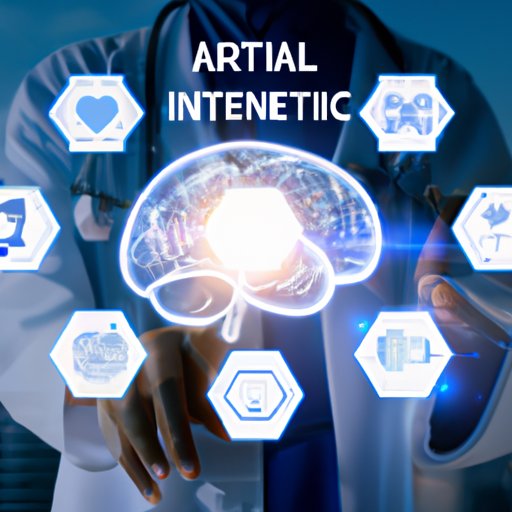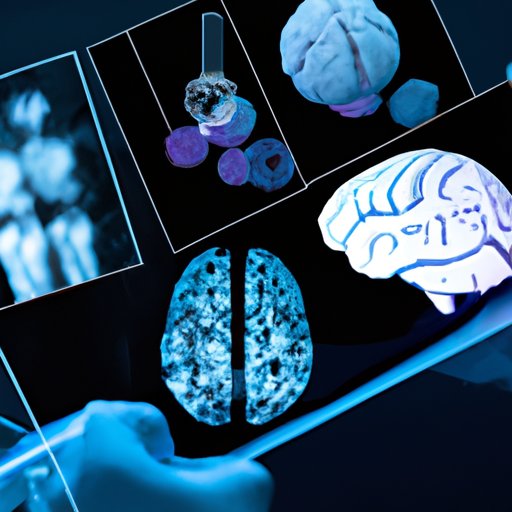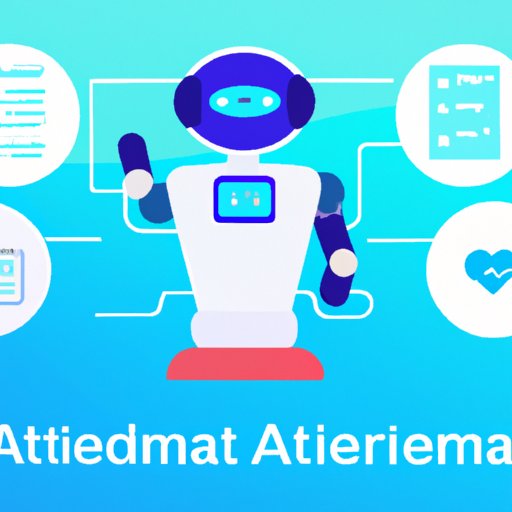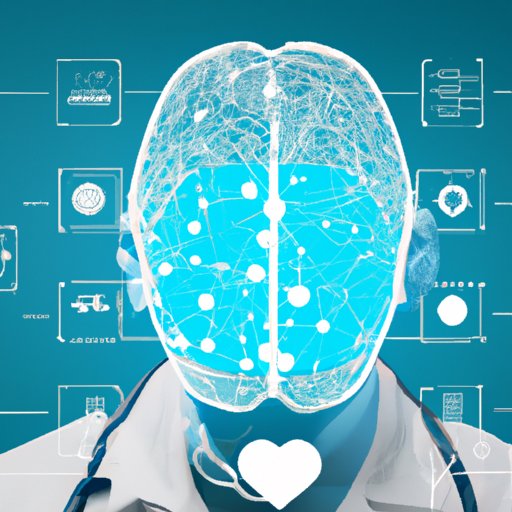Introduction
Artificial Intelligence (AI) is a rapidly evolving technology that has already made its mark in many industries. In healthcare, AI is being used to improve the accuracy of diagnoses, automate administrative tasks, and analyze patient records to provide better treatment outcomes.

Exploring the Benefits of AI in Healthcare
AI is already proving to be a valuable tool in healthcare, with a variety of potential benefits for both patients and medical professionals. Here are some of the most notable advantages of incorporating AI into healthcare:
Improved Diagnosis and Treatment
One of the primary uses of AI in healthcare is to improve the accuracy of diagnoses and treatments. By leveraging machine learning algorithms and natural language processing, AI can help doctors more accurately identify illnesses and recommend personalized treatments for each patient.
Automating Administrative Tasks
AI can also be used to automate tedious administrative tasks such as billing and coding processes, appointment scheduling, and patient follow-ups. This can free up valuable time for medical professionals, allowing them to focus on providing better care for their patients.
Analyzing Patient Records
By analyzing large amounts of patient data, AI can help doctors make more informed decisions about diagnosis and treatment. AI-assisted predictive analytics can also help identify high-risk patients and monitor diseases over time, resulting in better outcomes for those patients.
AI-Based Diagnosis: How AI is Helping Doctors to Reach Accurate Diagnoses
AI is becoming increasingly important for reaching accurate diagnoses. Here’s how it works:
AI’s Ability to Process and Analyze Large Amounts of Data
AI can process and analyze large amounts of data quickly and accurately. This makes it possible for AI-based systems to detect patterns and anomalies in medical data that would otherwise be too time-consuming or difficult for humans to detect.
AI-Assisted Diagnostic Tools
AI-assisted diagnostic tools such as computer-aided detection (CAD) systems can help doctors identify diseases more quickly and accurately. These systems use AI to recognize patterns in medical images, such as X-rays and CT scans, that may indicate the presence of certain diseases.

The Use of AI in Medical Imaging and Data Analysis
AI is also being used to improve medical imaging and data analysis. Here’s how it works:
AI-Assisted Image Recognition
AI-assisted image recognition systems can be used to identify abnormalities in medical images, such as tumors or lesions. These systems can save time by quickly scanning images for irregularities, allowing doctors to focus on providing the best care for their patients.
AI-Assisted Data Analysis
AI can also be used to analyze large amounts of patient data, such as medical records, laboratory results, and prescription histories. By leveraging machine learning algorithms, AI can detect patterns in this data that would otherwise be difficult or impossible for humans to detect. This can help doctors make more informed decisions about diagnosis and treatment.

Automating Administrative Tasks in Healthcare with AI
AI is also being used to automate tedious administrative tasks in healthcare. Here’s how it works:
Streamlining Billing and Coding Processes
AI-based systems can streamline billing and coding processes by automatically filling out forms, verifying insurance information, and submitting claims. This can significantly reduce the amount of time spent on administrative tasks, allowing medical professionals to focus on providing better care for their patients.
Automated Appointment Scheduling
AI-based systems can also be used to automate appointment scheduling. This can save time for both patients and medical professionals by quickly and accurately scheduling appointments based on availability.
Analyzing Patient Records with AI for Better Treatment Outcomes
AI can also be used to analyze patient records for better treatment outcomes. Here’s how it works:
AI-Assisted Disease Monitoring
AI-assisted disease monitoring systems can be used to identify high-risk patients and track changes in their condition over time. This can help doctors make more informed decisions about diagnosis and treatment, resulting in better outcomes for their patients.
AI-Assisted Predictive Analytics
AI-assisted predictive analytics can also be used to predict the likelihood of certain diseases and disorders, as well as the effectiveness of various treatments. This can help doctors determine the best course of action for each patient.
Conclusion
AI is becoming an increasingly important tool in healthcare, offering numerous potential benefits for both patients and medical professionals. From improving diagnosis and treatment to automating tedious administrative tasks, AI can help healthcare providers deliver better care for their patients. Additionally, AI-assisted data analysis can help doctors make more informed decisions about diagnosis and treatment, resulting in better outcomes for their patients.
(Note: Is this article not meeting your expectations? Do you have knowledge or insights to share? Unlock new opportunities and expand your reach by joining our authors team. Click Registration to join us and share your expertise with our readers.)
